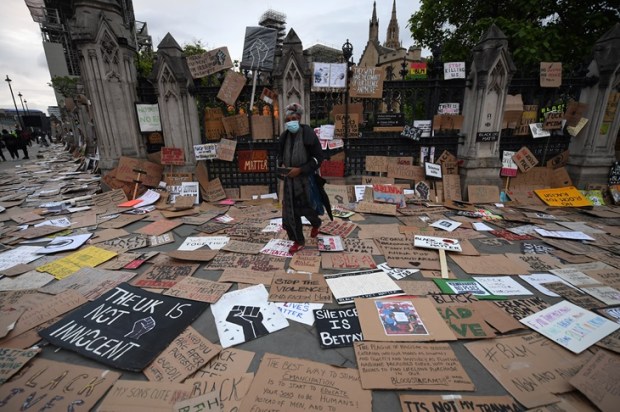An important thing to remember about large parts of the government bureaucracy and the not-for-profit/community sector is that they are giant employment schemes for people who would rather not work in the private sector, with the actual aims of respective agencies and organisations being of secondary importance. This is not to disparage great work done by many, particularly in the “third sector”, but to acknowledge that the number one objective of every structure is to perpetuate itself and keep expanding.
With that in mind, the stories like this one from earlier in the week are not really surprising:
At an emotional press conference in Batemans Bay, Member for Bega Andrew Constance came out swinging against the Red Cross, Salvation Army and St Vincent De Paul for taking too long to distribute money.
“The money is needed now, not sitting in a Red Cross bank account earning interest so they can map out their next three years and do their marketing,” Mr Constance said…
The Australian Red Cross has received $95 million to date and on Wednesday announced they have allocated $30 million to victims.
A spokesperson said the organisation has paid out 559 grants but has 1,492 open applications.
St Vincent De Paul has raised $12.5 million and spent close to $1.1 million through financial packages for eligible households.
The correct figure for the Red Cross is actually $115 million. Or this story says:
While Mr Clements denied any of the $115 million raised by The Red Cross would go towards marketing or paying executives he did say up to 10 cents in every dollar raised could be allocated toward administration costs.
“No more than 10 per cent goes towards administering this response effort,” Mr Clements said.
But this morning Mr Clements said the charity didn’t expect to spend anywhere near $11 million on administration costs.
So if you are one of the outraged donors, here are six points to keep in mind:
- While a lot of charities are run by volunteers, the bigger ones are much more complex and resemble more the private or the public sector organisations. There, a significant, if not overwhelming, proportion of all funds raised goes towards salaries and staff costs, administration and indeed the costs of raising money in the first place. One reason I never buy tickets in charity lotteries and never give to the can-shakers is that in many of those cases charities can end up with as little as 10 cents out of every dollar donated. The Australian Charities and Not-for-profits Commission maintains a register, where all charities have to submit their financial statements, which you can access to see all their income and outgoings. You need to, of course, keep in mind that most charities provide – through their employees – services rather than direct monetary support for their causes, so it’s not possible to directly measure how good/effective a charity is at what it does by merely looking at the proportion of its revenue spent on salaries or operational expenses.
- Having said that, don’t necessarily assume either that it all must be money well spent. One charity I’m familiar with has recently fired a significant number of its mid-level employees in order to boost the top management’s salaries and superannuation. As for their operations, the well-remunerated bosses are hoping that casual staff and volunteers will pick up the slack. Despite shielding itself with its do-good image, the sector has got its good, bad and ugly like in every other sphere of life.
- Much of funding (again, in particular for the larger players) comes from state and federal governments so in effect you end up donating twice – once involuntarily through your taxes and a second time through your direct donations.
- Disasters open hearts and wallets, causing significant spikes in donations. And while the emergency response can take a lot of money, the ongoing, less sexy work might be equally worthy but much more under-resourced. This is why charities like to keep some of the money raised in the times of crisis for later, which usually works for them unless they get caught out like this time.
- The time in the immediate days and weeks after a fire or a floor or other calamity is the most crucial for the victims; this is when they need the most assistance, having often lost everything but the contents of their bank accounts (if any). In the longer term, insurance and governments are likely to assist with rebuilding and getting back to life/work. This is why charities should particularly focus on the gap in the immediate aftermath, instead of holding back resources for future use, whether on this or other cases.
- There is a problem with the model we currently have; what we need is a rethink and a reconfiguration so that we can provide domestically the similar response that organisations like Medicines Sans Frontiers provide to the victims of natural (and some man-made) disasters throughout the (mostly developing) world. In Australia, unlike in, say, the post-tsunami South-East Asia, the basics of life are less of a challenge, since the emergency services response will provide food and water, medical attention and shelter. But we need our charities heavily on the ground as soon as it’s safe in order to assist those affected with money, necessities and assistance to get going and start planning to rebuild lives and livelihoods.
So keep your eyes open and be an informed giver. Understand how charities operate and know what to expect. Before you donate, try to find out where and when the money is going. Don’t always follow the crowd. Often the bigger is not necessarily the better. Be generous, but be realistic and be imaginative.
Arthur Chrenkoff blogs at The Daily Chrenk, where an earlier version of this piece also appears.
Got something to add? Join the discussion and comment below.
Got something to add? Join the discussion and comment below.
Get 10 issues for just $10
Subscribe to The Spectator Australia today for the next 10 magazine issues, plus full online access, for just $10.


























Comments
Don't miss out
Join the conversation with other Spectator Australia readers. Subscribe to leave a comment.
SUBSCRIBEAlready a subscriber? Log in